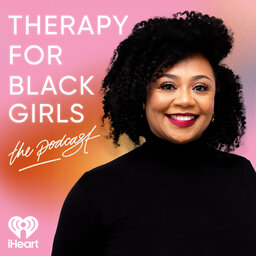Session 341: So You Wanna Be A Yogi?
Welcome back to another episode of the Therapy for Black Girls January Jumpstart mini-series. All month long we will host conversations with talented Black women leaders across creative and professional mediums to assist you in putting the “P” in prioritizing your personal growth. If you’ve been holding back on doing you, THIS is your sign to jump head first into the possibilities of a New Year.
Joining me for today’s conversation is yoga instructor and wellness advocate Austin Maddox. Austin's yoga journey began 16 years ago and has since expanded into a multi-faceted wellness program. During our conversation today, Austin shares how to develop a yoga practice that works for your personal needs, her favorite yoga poses for a mental health release, and where beginner yogis can look for cost-effective resources and classes.
About the Podcast
The Therapy for Black Girls Podcast is a weekly conversation with Dr. Joy Harden Bradford, a licensed Psychologist in Atlanta, Georgia, about all things mental health, personal development, and all the small decisions we can make to become the best possible versions of ourselves.
Resources & Announcements
Visit our Amazon Store for all the books mentioned on the podcast.
Grab your copy of Sisterhood Heals.
Where to Find Austin
Stay Connected
Is there a topic you'd like covered on the podcast? Submit it at therapyforblackgirls.com/mailbox.
If you're looking for a therapist in your area, check out the directory at https://www.therapyforblackgirls.com/directory.
Take the info from the podcast to the next level by joining us in the Therapy for Black Girls Sister Circle community.therapyforblackgirls.com
Grab your copy of our guided affirmation and other TBG Merch at therapyforblackgirls.com/shop.
The hashtag for the podcast is #TBGinSession.
Make sure to follow us on social media:
Twitter: @therapy4bgirls
Instagram: @therapyforblackgirls
Facebook: @therapyforblackgirls
Our Production Team
Executive Producers: Dennison Bradford & Maya Cole Howard
Producers: Fredia Lucas & Ellice Ellis
Production Intern: Zariah Taylor
 Therapy for Black Girls
Therapy for Black Girls


